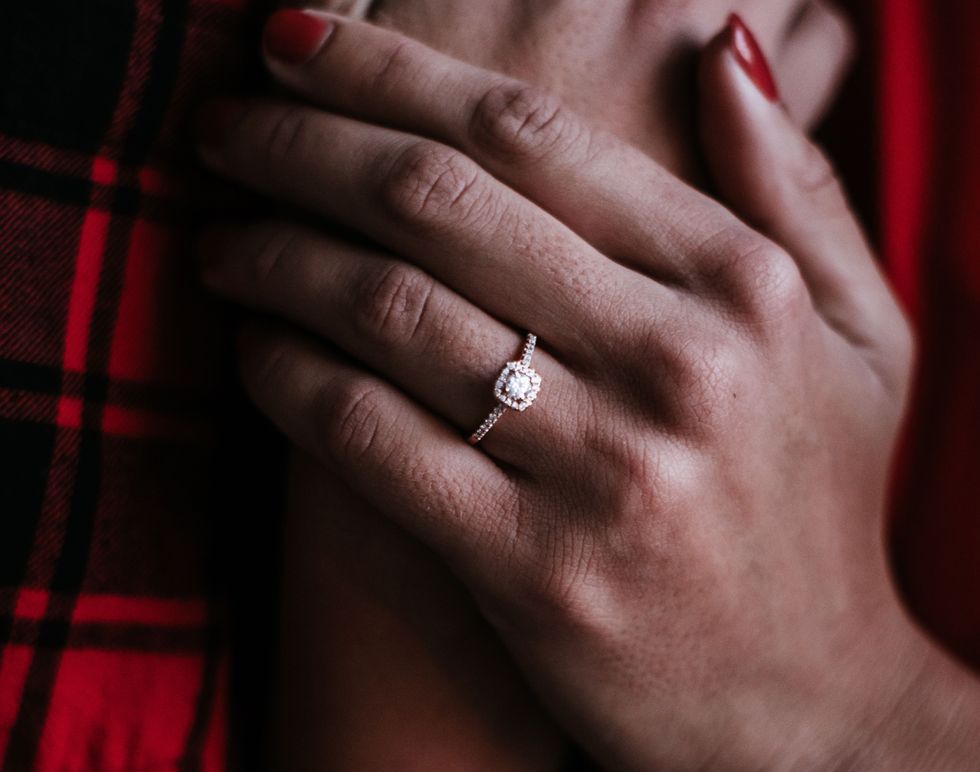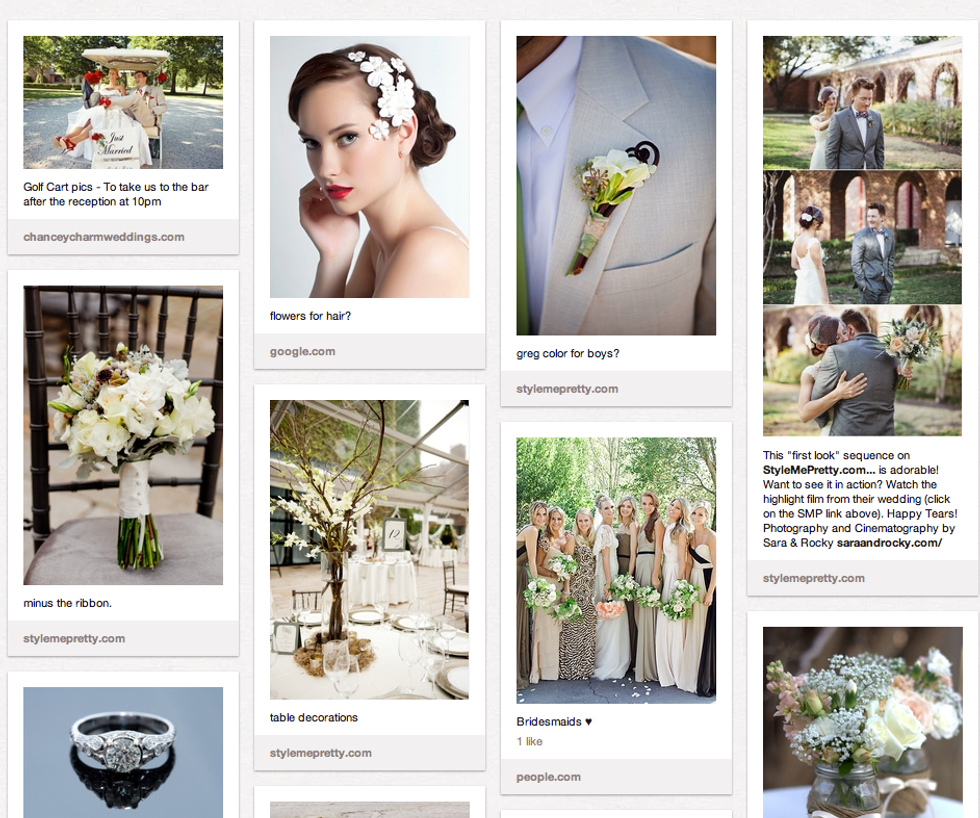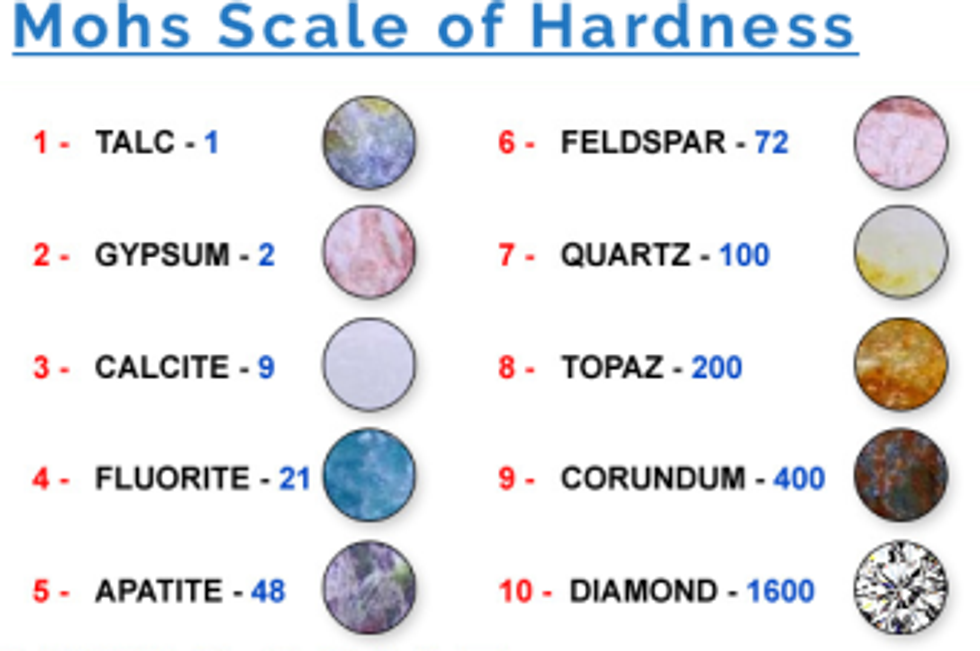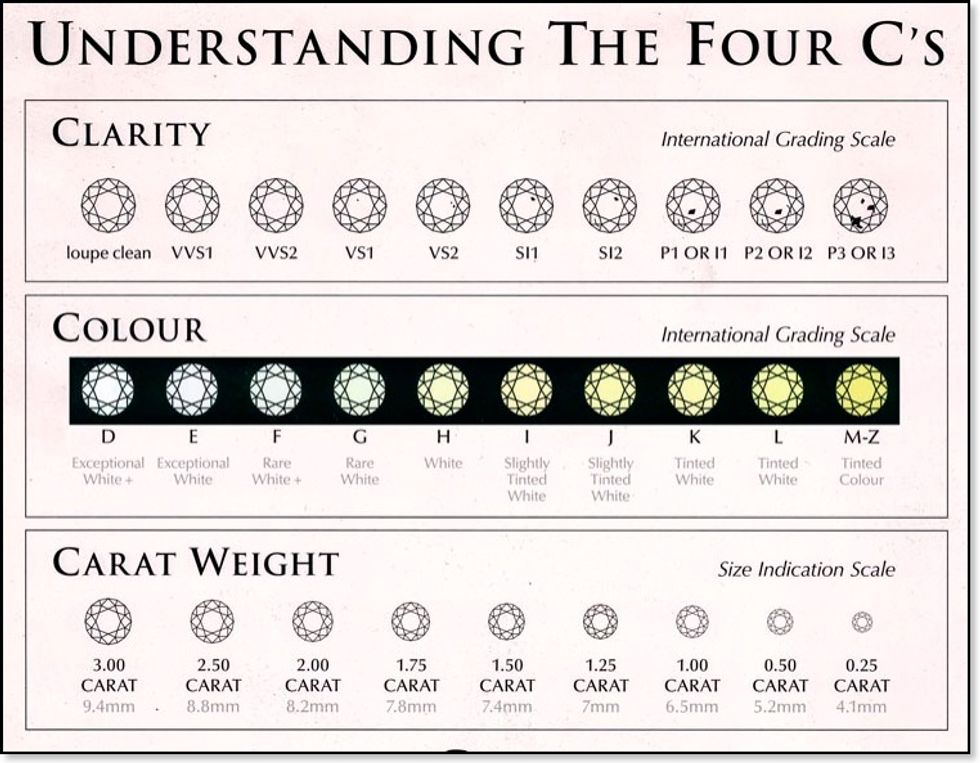Oh. My. Gosh.
You want to propose?! That's amazing! But, wait..... Where do you even start? There are a few things you should ask yourself before you start this journey, and you should be prepared to turn into a stealthy detective to figure out what kind of ring your future spouse is going to be the happiest with.
Sure, she might always say, "Oh, honey. Anything you get me, I will love no matter what!"
She's TOTALLY LYING.
She knows exactly what she wants! She has probably been dreaming of this moment since she was a kid, and it's only gotten worse now that Pinterest is available.
There are several ways that you could try to find out what your future fiance would like, but as someone who has worked in jewelry stores for most of her adult life, I have narrowed it down to six tried and true ways to find out exactly what she wants. So, without further ado, let's get shopping!
1. Stalk the crap out of her on the internet.
Find her social media pages, because chances are she has liked some kind of jewelry page or will give you some kind of an idea of a style that she likes. A definite one you need to find is her Pinterest — this will show you everything she has ever fallen in love with or even remotely liked. You may have to steal her phone or get on her desktop where she is already logged in, though, because she might have this board kept on "secret." Oh, and be prepared to delve into the unknown.... We have a habit of pinning, like, EVERYTHING.
2. Stalk the crap out of her in person.
Start paying attention to the jewelry she already wears! For example...
Does she hardly ever wear any at all? Maybe she would like to just wear a small band on her finger.
Does she usually just have small stud earrings on and occasionally a dainty necklace? Chances are she would be a diamond solitaire kind of gal.
Is she interested in vintage things, or things with lots of detailing? Check out a ring with filigree or migraine on it. Maybe something with a stone other than a diamond? (Think sapphires or other stones with a high grade of hardness and durability!)
Does she wear a lot of large statement necklaces and a heavy stack of bracelets? Try a thicker ring with lots of bling on it, maybe something with pave!
Also, and perhaps the most important part, find a ring she normally wears on her ring finger and steal it. Bring it in to be sized so you can have at least a guesstimate of what you are going to need to get, in case it needs to be special ordered! Keep in mind some rings cannot be sized for different reasons, as well!
3. Keep in mind her career choices.
If she is a school teacher or works in the medical field, a tall cathedral or anything with relatively sharp edges on it is not going to work, whether it is picking up a small child or pulling on rubber gloves. Try something that is bezel set or sits flush (or at least close to flush) to the finger.
If she has a desk job with a lot of typing or working with her hands, a band or a simple ring without a lot of stones on the side would probably be best, just so she doesn't get annoyed with it rubbing inside her fingers.
If she has a job in retail or somewhere that she doesn't have to work with her hands or anything that could be scratched up, you are free to choose a high standing diamond or something with a ton of prongs on it like a pave diamond covered ring.
4. Pick out a budget!
I can't tell you how many times I have either a proposer, a proposee or a couple come in and they have no idea about what their budget is.
I cannot tell you approximately how much a one carat round diamond would be—there are simply too many variables to have an average price stuck on it. Color, clarity, and other grading can all make the price jump by thousands of dollars. Mountings for the diamonds are the same way—there is no average price for them.
You could have a $400 solitaire mounting with no diamonds on it, or you could have a $15,000 one with pave diamonds throughout the whole thing, and could cost more than the diamond itself!
Think about your yearly salary, think about how long your significant other will wear the piece for, and think about think about what you would be comfortable spending. There is no right or wrong answer!
5. To diamond or not to diamond?
Diamonds are the norm for an engagement ring, right? Right! But, what if your gal happens to not want to be normal? There are some stones that would absolutely work and be beautiful and unique, and some you should absolutely avoid at all costs. Countless times I stumble upon articles on other sites about "alternative" or "affordable" rings that have emeralds or pearls as center stones, set in Sterling Silver.
However, please, stay away from soft stones.
If you are planning for this to last, her ring should last just as long, if not longer! Check out the Mohs Scale of Hardness for a reference.
Anything with softer stones such as pearl, opal, emerald, tanzanite or other quartz relatives are a no-no in my book. Working in jewelry for so long and after so many poor rings being brought in and either being polished down to nothing to get scratches and dents out or having to be replaced every few years is so sad (and tiring) to see. It will cost you more in the long run!
Don't worry, you aren't just stuck with diamonds! Sapphires and rubies are a great idea for an alternative stone while keeping hardness enough to put up with a daily wear. Luckily, sapphires come in all kinds of colors, almost anything you can think of. While these still scratch easier than diamonds (which also can wear down and get scratched themselves, they aren't invincible), they will hold up so much better than any other type of stone.
6. Study the Four C's of diamonds.
Clarity:the quality of the diamond, pertaining to internal flaws (called "inclusions") and defects on the surface of the stone. Starting with "loupe clean" or more commonly known as "flawless" and goes down in stages with more and more inclusions in the stone. We recommend you stay somewhere at SI1 and above to be eye-clean without looking through a microscope!
Color:Starting at "D" for colorless, the scale goes down the alphabet the more yellowish of a color the stone has. Usually, in a white gold/platinum mounting, you can get away with an "I" and up, but for yellow gold mountings, I recommend anything above a "G" as the color of the gold will make the stone look "warmer" or more yellow.
Carat: The size of the diamond. Don't think that a 1-carat size will be the same size in every cut of diamond—different cuts will stand differently. Most jewelers will have examples of different carat sizes for stones you can always ask to see or compare.
Cut (not pictured in table):The cut is so important. Make sure you at least have an idea of what she might want for this part! Here are some examples, starting with the most commonly asked for: round, cushion, oval, princess, radiant, emerald, trillion, kite, heart. If you can think of it, I'm sure a diamond has been cut like it. Round brilliant cut diamonds are the most popular and traditional, but we are seeing oval cuts increase popularity in waves lately! Princess cuts are fading out, and hardly anyone ever asks for a marquis anymore. (Marquis—that football-shaped diamond all of your mom's had in the 80's, along with baguettes on the side, probz.)
Just do your research. If you do that and refer back to this article—you can't go wrong! Also, don't worry, most jewelers will exchange something if she absolutely hates it. Now get out there and get to researching and stalking your beautiful girl. You are going to do great! Good luck, and just have fun!
You're welcome in advance.












 mr and mrs potato head
StableDiffusion
mr and mrs potato head
StableDiffusion










